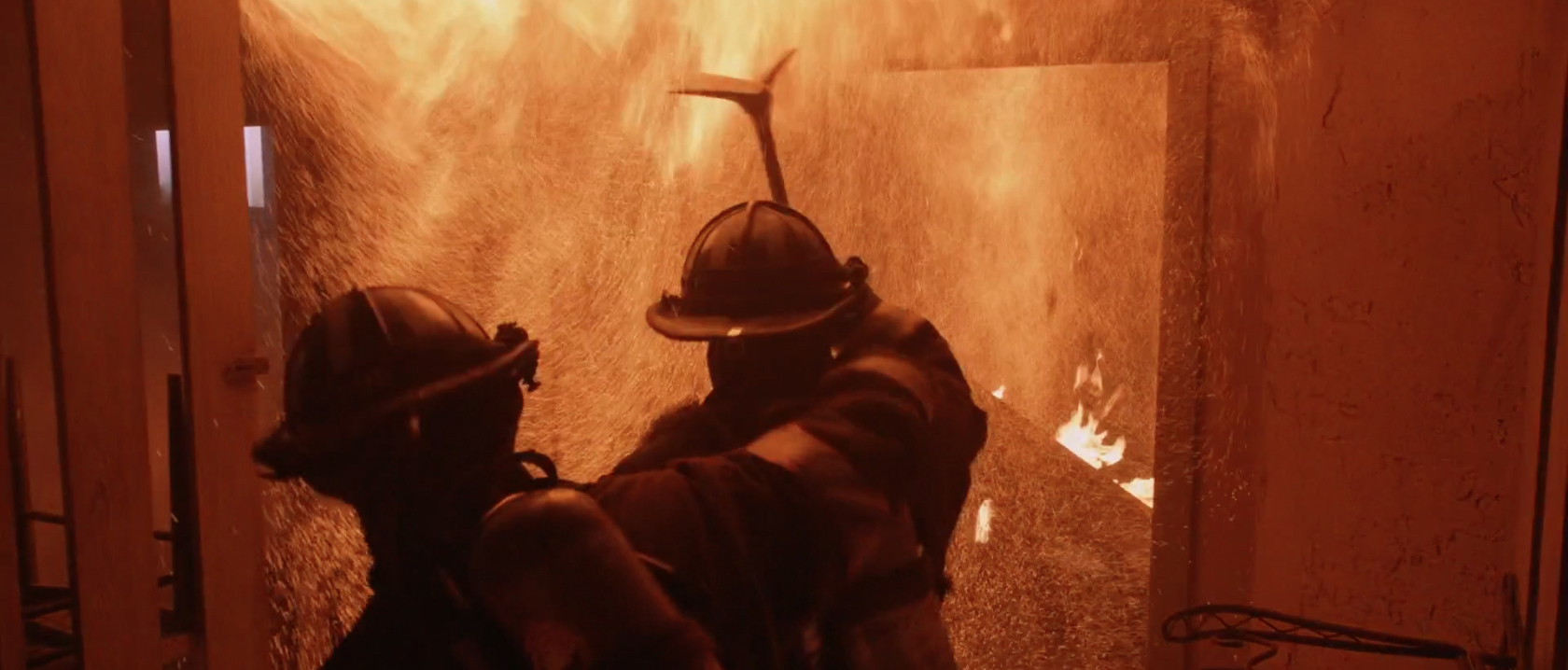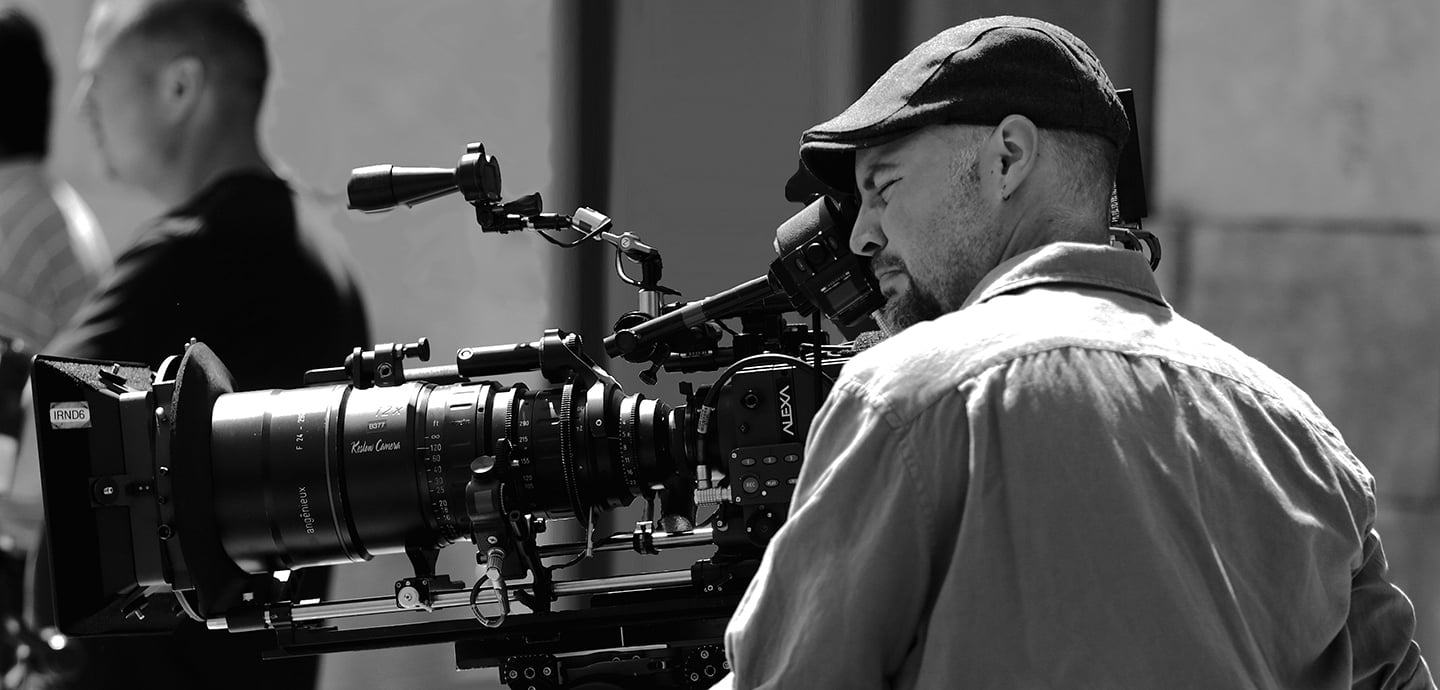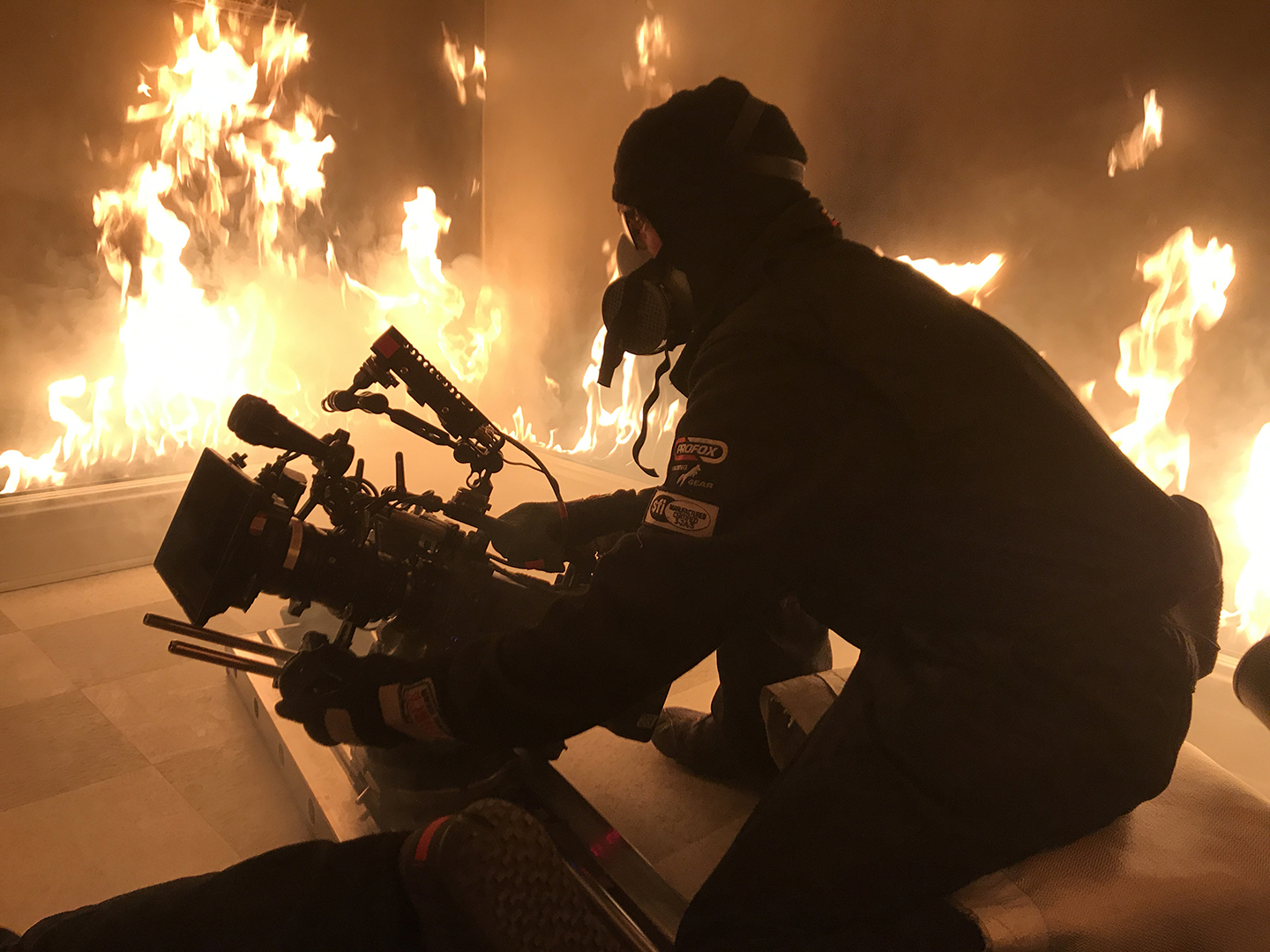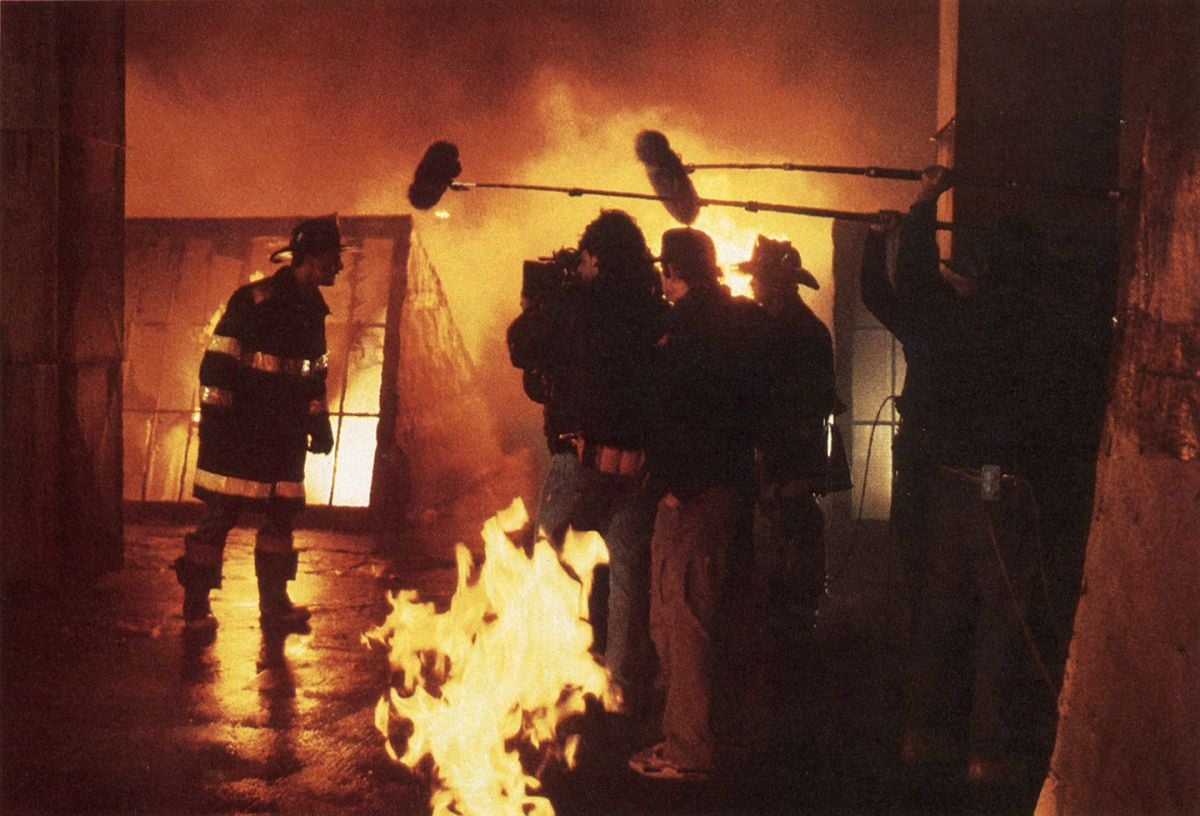
Chicago Fire: Burning Down the House
Cinematographer Jason Crothers details his approach to safely photographing a variety of conflagrations on a weekly basis.
Cinematographer Jayson Crothers details his approach to safely photographing a variety of conflagrations on a weekly basis.
Chicago Fire images courtesy of Jayson Crothers and NBCUniversal.
There’s no doubt that there is beauty in fire and the light that it produces. But fire is also inherently dangerous and unpredictable, and therefore difficult to tame. Cinematographers working with real flames, either as a photographic element or a light source, must proceed with great caution to ensure the highest degree of safety at all times. Never let your guard down around fire.
My own education regarding fire began with this publication’s coverage of Backdraft (AC May ’91), directed by Ron Howard and photographed by Mikael Salomon, ASC (see below). Although I haven’t had to shoot a blazing inferno — candles, fireplaces and campfires are more my wheelhouse — Salomon’s approach to fire photography has remained my go-to reference. Recently, though, a conversation I had with cinematographer Jayson Crothers served as an advanced class, taking my education to a higher degree.

Crothers has served as director of photography for the past three seasons of the Dick Wolf-produced NBC drama Chicago Fire. He joined the show two years prior, in its second season, as B-camera operator and 2nd-unit cinematographer under Lisa Wiegand, ASC. The series focuses on firefighters in the Windy City; therefore, as Crothers explains, “every couple of episodes we have a big burn.”
Exterior fires are shot on location, but interior burns are always shot on a controlled stage, dubbed the “Burn Stage,” in a converted warehouse at Cinespace Chicago Film Studios. “It’s impractical to put fire inside a real location,” the cinematographer notes, “so we save all of our interior fires for the Burn Stage.”
The Burn Stage houses the “bones” of three different set configurations at all times: a basement, an open room that has served as everything from an apartment to an art museum, and a multilevel set for when characters need to move from one floor to another. All of the set construction is designed for use with propane fire effects; all of the set dressing is also made of metal, and any paint coating has been stripped off to avoid unwanted — and potentially dangerous — chemical vapors from being released in the set.
“Every setup on the Burn Stage takes between 45 minutes and an hour to set up.
We design our setups to get as many edits as we can within a single setup, but they
never run very long.”

Additionally, the stage has been specially configured with a custom ventilation system to help control the amount of heat and smoke present in the stage at any given moment. The ceilings of the sets are designed so that portions can be removed — without being visible to camera — in order to channel the heat and make the temperatures somewhat more bearable. Extra-large air conditioning units have been installed to help cool the stage between takes.
“Shooting on the Burn Stage comes with its own unique challenges and is exceptionally slow,” offers Crothers. “On a typical day on our show, we’ll shoot seven to eight pages and might do 50 to 60 setups with two cameras [25-30 per camera]. On a Burn Stage day, we might shoot two pages and accomplish 14 setups [working primarily with a single camera] in the whole day.
“Every setup on the Burn Stage takes between 45 minutes and an hour to set up,” he continues. “We design our setups to get as many edits as we can within a single setup, but they never run very long. We might be able to run a one- or two-minute take with just five or six fire elements in the scene, but if we have 15 or 20 fire elements going on, after 20 or 30 seconds the heat is far too intense and we have to stop. Most of our takes on the Burn Stage are between 20 and 30 seconds — a character runs down a hallway, kicks open a door and that’s it. Then it takes another 45 minutes to an hour to reset for the next setup.
“Where will the actors be? Where will the crew be? Where will stunts be? We discuss any flame that might be close to windows, as too much heat can cause glass to crack
and shatter.”

“Very rarely will we do a take-two, as even that can take 15 minutes or more to reset,” Crothers adds. “If an actor misses a line, we just keep going; if someone makes a mistake, we just keep going. If anything ever goes truly wrong, though, anyone on the set can yell ‘fire out’ at any time, and everything is instantly extinguished, no questions asked. In the five years I’ve been on the show, that’s only happened once, and it was during the setting of fire levels, not an actual take. For obvious reasons, we take safety extremely seriously.”
Before the start of each new setup, the crew clears the set and turns it over to special-effects coordinator John Milinac and his team, who check every fire pipe, hose and connection to ensure there are no leaks and everything is safe. Depending on the number of fire pipes used in the shot, it can take 30 minutes to an hour to check the entire set. “For example, the hallway on the second floor of our multilevel set is about 6 feet wide by 40 feet long,” Crothers notes. “Each fire pipe is about 4 feet long, and they are rigged along the set at specific intervals. For a big burn, we might have 30 feet of fuel pipes on each side of the hallway, placed in gaps designed into the set’s baseboard.”
All crewmembers who need to be in the Burn Set wear protective suits — either full firefighter turnout gear for the larger fires, or lighter suits that allow for more mobility for smaller burns. Therefore, with the exception of the actors portraying the victims trapped in the fire, the cast and crew are all dressed like firefighters. “Victims are always played by stunt performers,” explains Crothers. “They’ll get coated in ‘burn jelly’ [a protective fire-retardant gel], but they’re still the most vulnerable and susceptible to heat damage, and they’re the ones we really have to watch out for. When the fire is turned on, the temperature can rise more than 100 degrees in seconds. We make sure that no open flame is ever too near a stunt performer.”
“We don’t do rehearsals with fire; we do a dry-run rehearsal with no fire. I joke that shooting on the Burn Stage is like shooting film: You don’t get to see what you’ve actually got until after the fact.”
Crothers starts a day on the Burn Stage with a walk-through alongside Milinac. The cinematographer shares, “I’ll get a diagram at the beginning of the day showing me where the fire pipes will be and what number each one is labeled, and we go one pipe at a time, setting levels — more fire here, less there. When we set the levels, we set them individually, turning on one pipe, eyeballing its level, and then turning it off and moving on to the next one. We discuss the action around each pipe very carefully. Where will the actors be? Where will the crew be? Where will stunts be? We discuss any flame that might be close to windows, as too much heat can cause glass to crack and shatter.
“Then we need to test [all of the fire pipes] at once, and a lot of complicated physics take place,” he continues. “If you have several pipes in close proximity to each other, they all wind up competing for the same oxygen, and each one can end up being significantly smaller than if it were the only pipe that was burning. Also, if one propane tank is branched off to several pipes, the pipes can all be low because the gas is being divided between them.
“There’s also ceiling fire, which we affectionately call ‘brain fire,’” Crothers adds. “It’s fueled by propane that is pooled in the ceiling. Since it doesn’t have anywhere to go, it ends up crawling along the ceiling in a beautiful rolling pattern. But, depending on how the other flame bars are affecting the oxygen flow, the brain fire can be a bit unpredictable. The heat from the wall might push the air around, and suddenly that slow, rolling brain fire is whipping all over the place and becomes a safety hazard.
“After a few years of doing this, we’ve gotten used to these variables,” the cinematographer offers. “We know if there’s a big wall fire that requires several pipes, the pipe that’s closest to camera should be brighter and hotter, and the subsequent pipes should be set lower so as not to compete for as much oxygen or fuel. Still, there isn’t any formula. We have to turn everything on, see how it looks, and adjust the levels accordingly — and it can still be unpredictable.
“You can’t re-create the Burn Stage somewhere else to test new things. It has to be done in the literal heat of the moment — and if it doesn’t work, that can be a loss of a half hour or more of production time. It’s not a luxury we can afford.”
“After we set all the fire levels for a sequence, we then discuss each shot, and what needs to be on and what can be off,” Crothers continues. “An entire room might be on fire in a sequence, but for a single shot we might not see the wall behind us. Sometimes I’ll still have fire active behind camera because it will show up in the reflection of a character’s facemask or it will give me the right base of light or color in the room, but mostly we turn off fire behind camera and bring in Maxi-Brutes to compensate for the missing firelight. We do this to keep the overall temperature down and keep things safer — but nothing looks as good as actual fire.”
In addition to the walkthrough to set fire levels, Crothers conducts a separate walkthrough to set smoke levels. “We don’t see all the elements together until we actually do a take,” he says. “We don’t do rehearsals with fire; we do a dry-run rehearsal with no fire. I joke that shooting on the Burn Stage is like shooting film: You don’t get to see what you’ve actually got until after the fact.”
The production uses standard glycol-based fog machines for smoke in the fire sequences, as approved by the studio. “Over the years we’ve tried some different mixes for smoke,” Crothers notes, “but for the most part we stick to the tried-and-true foggers. Mostly this is because they work, and because what it takes to test something new is way too much of a liability on production. You can’t re-create the Burn Stage somewhere else to test new things. It has to be done in the literal heat of the moment — and if it doesn’t work, that can be a loss of a half hour or more of production time. It’s not a luxury we can afford.”
The fog machines use heated high-pressure nozzles to spray glycol particulates into the air, where they adhere to create fog. However, the heat of fire almost instantly evaporates the particulates, causing the fog to disappear. “We always have to over-smoke the set to get the look we want,” says Crothers. “Sometimes a new director will come in, we’ll start smoking [the set] for a shot, and they’ll yell, ‘That’s too much smoke!’ because they can’t see anything. But we’ll be yelling, ‘More smoke!’ because we know as soon as the fire comes on, most of it will burn off nearly instantly.”
To compete with both the smoke and the brightness of the flames during a take, Crothers has to work with extremely high light levels. “If I’m lighting up a daylight city backing on the stage, I’m typically doing it with multiple 18K HMIs, and we’re usually lighting the backing to an f64 or f90 to punch through the smoke and compete with the fire,” he explains. “The backing might read at f64 with no smoke on set, but once moderate smoke is added, a spot reading might reveal the backing is only reading as f8. The farther away from the backing the camera is, the more smoke there is between the lens and the backing — and the dimmer the backing might read. Once all of the elements are in play, that same f64 might read as f2.8.
“If you open up to a T4 or 5.6, you end up losing detail and color in the fire, so a T8 is usually the widest I’ll shoot on the Burn Stage, and sometimes I’ll stop down as far as T16 depending on the size
and scope of the fire.”
“On a recent episode, we used the most light we have ever used on the Burn Stage,” Crothers adds. “The set featured a lot of windows, so I was using more than a dozen 5K Skypans, four 18Ks, six Arri M90s, six M40s, and an assortment of smaller units wedged into places around the set just to get the basic level on the backings. When we walked out of the burn area, we all had to wear sunglasses — it was like an Arizona summer day. But on the set, with the fire and smoke, you barely saw anything out the windows!”
Crothers works with Arri’s Alexa Classic and rates the camera at 800 ISO. For fire sequences, he typically shoots between T8 and T11 to maintain good color rendition and texture in the flames. “If you open up to a T4 or 5.6, you end up losing detail and color in the fire,” he notes, “so a T8 is usually the widest I’ll shoot on the Burn Stage, and sometimes I’ll stop down as far as T16 depending on the size and scope of the fire. At those stops, a Maxi-Brute is really necessary to put out the amount of light I need to supplement the real fire. We feed [the Maxi-Brutes] back to the dimmer board and use a preprogrammed chase sequence to mimic the fire flicker. I usually use Full and ½ CTS combined on each Maxi to match the color of the flames.
“It’s always incredibly demanding and challenging to work on the Burn Stage,” Crothers concludes, “but it’s fulfilling to get the dynamic and powerful shots that we do with real fire. It amplifies the drama of the show exponentially.”
From the AC Archive:
Mikael Salomon, ASC on Backdraft
“It’s easy to get seduced by the possibilities of using the fire as your main source of light, but then you would get white rather than warmer-colored flames,” cinematographer Mikael Salomon, ASC told AC (May ’91). “We built up very high levels of ambient light, using HMI units and arcs balanced for daylight exposure.”
Without the high ambient light level, Salomon noted, actors would have silhouetted against fires, and he’d have had to print down to get the fire colors right, which would make the characters go darker still. “Two of the big fires were in daylight,” he said. “In the real world, you would be able to see details in faces. People don’t turn into black silhouettes just because there’s a bright fire behind them.”
The set for a rooftop fire scene was built in a parking lot, where Salomon used heavy diffusion to create a strong feeling of heat. He also wetted down the tar paper on the roof set, making it look like the tar was melting and, as an added benefit, reflecting the fire.
“Most people think of fires as red, but they are really white and yellow,” the cinematographer noted. “Use of the daylight-balanced film helped because [the fire] records warmer, and when that is combined with the heavy diffusion, the audience can see the yellow tones in the flames.”







